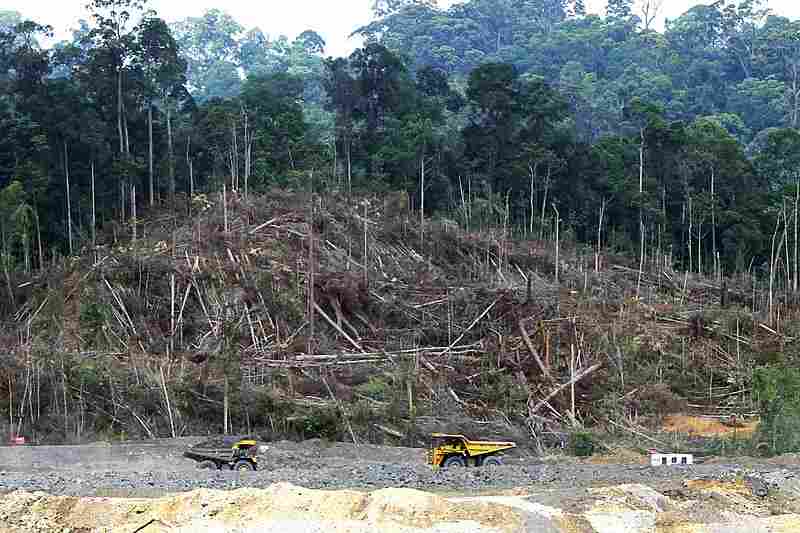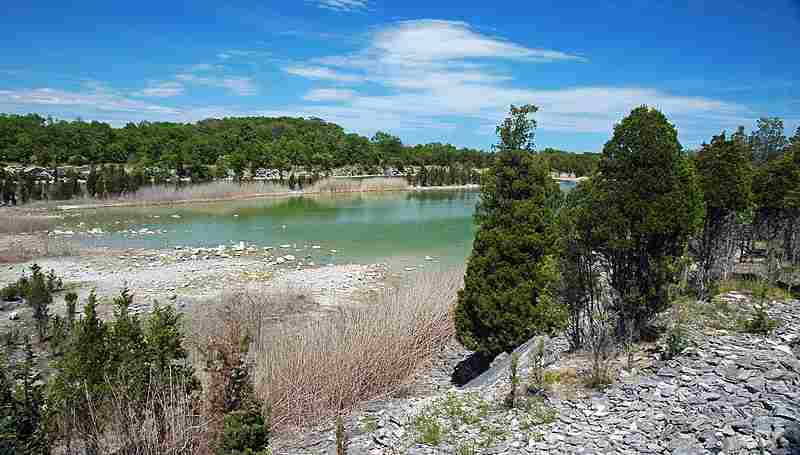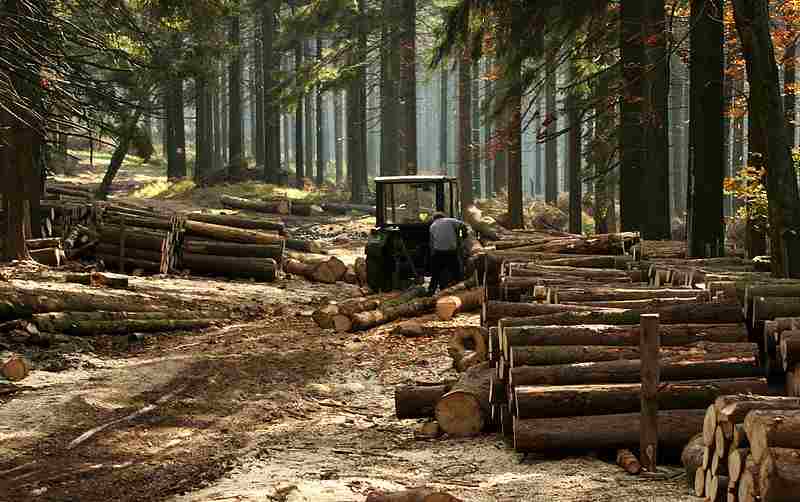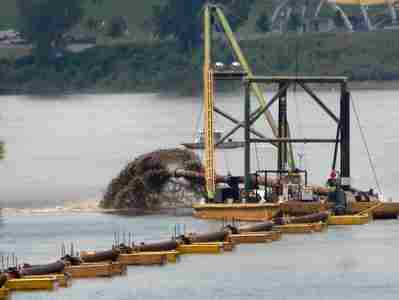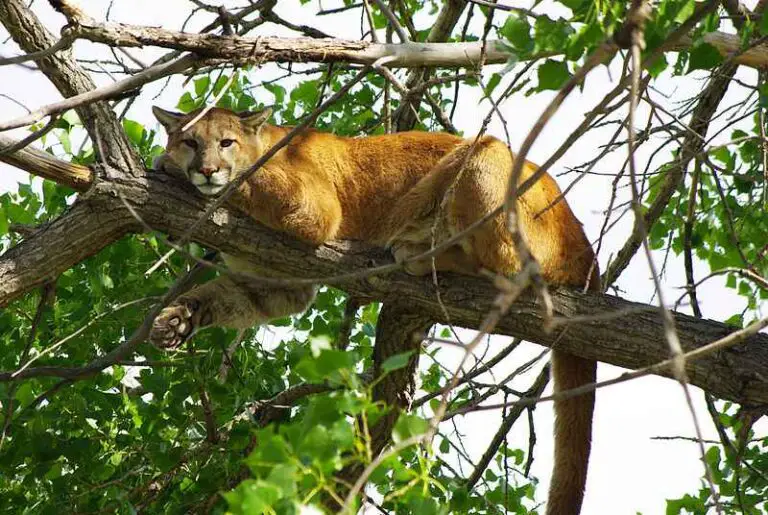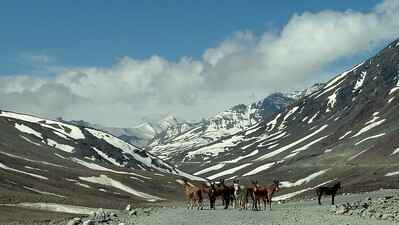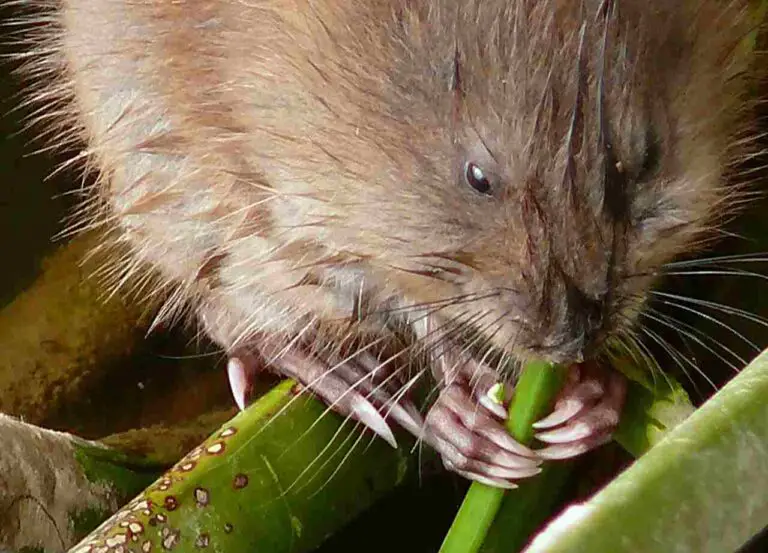9 Human Impacts on Rainforests Discussed
Human impacts on rainforests are; habitat fragmentation, biodiversity loss, topographic and geomorphic change, alteration of regional drainage characteristics, soil and water pollution, natural resource depletion, proliferation of invasive species, as well as ecological and land use conversion.
This article discusses human impacts on rainforests in detail, as follows;
1). Habitat Fragmentation (as one of the Human Impacts on Rainforests)
Habitat fragmentation refers to the process by which expansive, continuous habitats are broken up into smaller and isolated patches or fragments. This phenomenon is a major impact of human activities on rainforests, and it has various consequences for these ecosystems, some of which are discussed in the subsection below;
Consequences of Human-Induced Rainforest Habitat Fragmentation
Consequences of human-induced rainforest habitat fragmentation include direct destruction, edge effects, increased vulnerability, disruption of ecological interactions, and reduced habitat quality.
Human activities such as ranching, logging, mining, crop farming, and infrastructure development, can directly lead to the destruction of rainforest habitats [11]. This is because such activities often involve clearing large areas of forest, to leave fragmented patches.
Edge effects come into play as rainforests are fragmented into smaller forest patches. This is simply a phenomenon where the edges of forest fragments are exposed to different environmental conditions than the forest interior.
These edges may be subject to drying winds, increased light intensity, higher daytime temperatures, stronger air currents, and lower humidity. These changes can notably alter the microenvironment, and affect the fauna and flora living at the edges.
Fragmentation can limit breeding populations and make inhabitant species more vulnerable to extinction or regional extermination, especially if they are isolated within small, fragmented pockets of habitat [10]. This kind of isolation can lead to genetic drift and reduced genetic diversity, further increasing the vulnerability of the habitat.
Rainforests are particularly sensitive to extreme negative edge effects, which can include increased levels of vulnerability to hazards like wildfire and infiltration by invasive plant species. These edge effects can harm the integrity of the rainforest ecosystem.
Fragmentation disrupts ecological interactions at the trophic network level. For example, the loss of certain keystone species within forest fragments can disrupt complex ecological relationships, with devastating effects on the rainforest food chain.
Habitat fragmentation often results from urban development and installation of infrastructure like roads, among other forms of human activity. These activities not only destroy the habitat directly, but also introduce additional human disturbances into the remaining fragments; leading to further degradation.
Small fragments of rainforest, often have lower habitat quality, which can impact the ability of species to find shelter, food, and suitable breeding sites.
2). Biodiversity Loss
Biodiversity loss is another significant impact of human activities on rainforests.
Rainforests, particularly tropical rainforests, are known for their incredible biodiversity, but human actions have largely led to a decline in this diversity. Below is a concise discussion detailing some ways in which humans are impacting biodiversity in rainforests.
How Humans Affect Rainforest Biodiversity
Humans affect rainforest biodiversity and species richness, through their roles in deforestation, habitat loss and fragmentation, over-exploitation, influx of invasive species, climate change, resource extraction, pollution, and urbanization.
One of the most prominent factors that contribute to biodiversity loss in rainforests is deforestation. Trees and understory vegetation, are cleared on a massive scale for various purposes, including agriculture, mineral exploration, and infrastructural projects. This destroys the habitats of countless, native plant and animal species.
As forests are cleared for various human activities, natural habitats are lost, and the remaining forested area become fragmented. Smaller, isolated forest fragments are less capable of supporting diverse communities of species because of their low resource availability and connectivity, leading to population declines and, in some cases, species extinction.
Over-exploitation of rainforest resources, through such activities as hunting and logging, can lead to the direct decline of various species. Some animals are hunted for their meat or valuable body parts, while several valuable tree species are logged extensively till they become depleted.
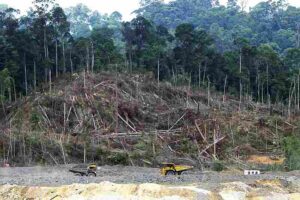
As will be elaborated in a subsequent section of this article, human activities can introduce invasive species into rainforest ecosystems. These invasive species may outcompete native species for resources and disrupt natural ecological equilibria, resulting in native biodiversity declines.
Although not specific to rainforests, climate change is a global environmental issue that is driven by human activities. It can cause alteration of the environmental conditions in rainforests, thereby affecting the distribution and survival of species which are adapted to specific climate regimes [8].
Pollution from municipal, industrial and agricultural activities can contaminate rivers and lands in rainforest regions, often harming in-situ terrestrial and aquatic ecosystems as well as the species that rely on them.
Largescale industries like manufacturing, agriculture, and oil and gas; often require large areas of forest to be cleared and roads to be built for their operations. These activities not only result in habitat destruction but also disrupt entire natural ecosystems.
Adjacent urban ecosystems and their infrastructure, can encroach on rainforest areas, causing further reduction of the available habitat for native species.
Human Impact on African Rainforests
African rainforests, like rainforests elsewhere, are experiencing similar pressures from human activities.
Human impact on African rainforests include deforestation, over-exploitation of resources, habitat loss/degradation, and the introduction of invasive species, which are also key drivers of biodiversity loss in these forests. Additionally, the African rainforests face unique challenges related to population growth (and overpopulation in some areas), conflicts over land, acute resource depletion, and food insecurity.
3). Loss of Carbon Storage Capacity (as one of the Human Impacts on Rainforests)
Human activities are causing major disruptions to the carbon cycle in rainforests, which result in a loss of their carbon capture and storage capacity. Some important points regarding this impact are discussed in the following subsection.
Issues Regarding the Loss of Carbon Storage Capacity in Rainforests due to Human Impacts
Discussions of carbon capacity loss in rainforests must include issues like forest degradation, deforestation, role of forests as carbon sinks, climate change, forest fragmentation, and carbon loss.
Human-induced forest degradation, which results from activities like logging for biofuel and clearing for agriculture, reduces the carbon storage capacity of rainforests. This is because when forest canopy structures are thinned or disturbed, the carbon stored in their biomass (through photosynthetic carbon sequestration) is released back into the atmosphere as carbon dioxide (CO2) [13].
Deforestation, which entails the complete removal of forests for various purposes, is a huge contributor to the loss of carbon storage capacity in these ecosystems. The carbon which is stored in trees, understory vegetation, and soil is released into the atmosphere when forests are cleared for agriculture, urban development, industrial projects, and/or infrastructure installation.
Rainforests are dominated by plants, which are capable of acting as both crucial carbon sources and sinks. These plants generally absorb more CO2 from the atmosphere than they emit, taking up such carbon dioxide from the atmosphere and assimilating it through the process of photosynthesis, so that it becomes retained in their tissues and in soil (where plant and animal remains accumulate [3]).
Human activities, such as bioenergy consumption, burning of fossil fuels and deforestation, can all release large amounts of greenhouse gases, which include CO2, into the atmosphere. These gases collectively contribute to global warming and climate change, and disrupt the stability of ecosystems, including rainforests.
Research studies have indicated that the ability of tropical rainforests to absorb CO2 has diminished over the last few decades [2]. Rising global temperatures and altered patterns of precipitation are negatively impacting the carbon uptake capacity of these forests.
Habitat fragmentation, an earlier-discussed consequence of human activity, disrupts the scale and uniformity of the carbon cycle (as well as the oxygen cycle) by isolating forested areas. Smaller forest fragments are less effective at sequestering carbon compared to expansive and contiguous forests.
Lastly, the carbon losses that result from deforestation and forest degradation in rainforests, can contribute to higher carbon emissions than those which are caused by climate change itself. This exacerbates the problem of rising atmospheric CO2 levels.
4). Topographic and Geomorphic Change
Human activities in rainforests can have significant impacts on landforms and geomorphology. Some important points regarding these impacts are discussed in this section.
Impacts of Human Activities on Landforms and Geomorphology of Rainforests
Impacts of human activities on rainforest landforms and geomorphology, can be discussed in terms of the activities themselves; such as mining and quarrying, as well as their effects and related outcomes, including deforestation, introduction of exotic species, environmental impact of machinery, track and road intersection, overgrazing, habitat destruction, and increased overland flow.
Mining and quarrying operations within rainforests, involve the excavation of rocks and minerals [9]. These activities can lead to significant changes in the local topography, including the creation of large pits and the largescale alteration of natural drainage patterns. Such changes are associated with substantial landform modification, which may occur as the formation of deep craters, among others.
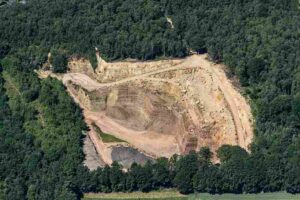
One of the most significant human impacts on rainforest landforms is that which is linked to deforestation. The clearing of forests for anthropogenic projects or habitation, alters the natural landscape to a dramatic extent. It usually leads to the removal of trees and vegetation, which can lead to increased weathering of rocks and soils, erosion, landslides, and changes in regional river courses.
The natural balance of rainforest ecosystems can be disrupted by the introduction of exotic plants and animals. These invasive species can alter vegetation patterns and soil composition, which in turn may affect landforms and geomorphology. For instance, invasive plant species can change the composition of the forest floor and its susceptibility to erosional change.
Utilization of heavy agricultural machinery, such as plows and tractors in agroforestry and other forest-based sustainable agricultural practices, can significantly impact landforms in rainforest regions. Soil compaction, disruption of natural soil horizon configurations, and changes in water runoff patterns can all occur due to mechanized farming practices [6].
The construction and use of tracks and wide roads in rainforest areas, for human use, can lead to widespread topographic changes. Roads, especially when poorly planned, can increase erosion and landslides. They can also fragment the landscape, altering natural drainage patterns and topographic continuity.
Overgrazing of forested lands by livestock can result in land degradation. Excessive grazing can lead to soil exposure and compaction, both of which negatively affect landforms and contribute to increased geomorphic modification rates.
The destruction and fragmentation of forest habitats, caused by human activities like logging and urban expansion, can lead to changes in landforms. Smaller, isolated forest fragments are more susceptible to both marginal and interior erosion, which alter the topography.
Replacing forests with cultivated land in hilly regions can significantly increase the overland flow, leading to higher rates of soil erosion and land degradation. This can also result in changes to the regional landscape and landform features.
5). Alteration of Regional Drainage Characteristics (as one of the Human Impacts on Rainforests)
Human activities carried out in rainforest areas can significantly alter the regional drainage characteristics of these ecosystems.
Here, some prominent issues regarding this impact are discussed.
Prominent Aspects of Regional Drainage Disruption by Humans in Rainforests
Drainage disruption by humans in rainforests can be as a result of rainfall pattern alteration, or impacts on other drainage processes.
Rainforests are highly influential toward regulating regional rainfall patterns [5]. They intercept rainfall through the dense canopy and allow for slow infiltration into the soil, while also establishing microclimatic conditions that determine the frequency and intensity of precipitation.
The natural process of rainfall interception by forests, helps to regulate floods by reducing the immediate runoff of excessive rainfall as stormwater, which can lead to downstream flooding during tropical surges.
Processes and Components of Drainage Basins and Their Alteration by Human Activities in Rainforests
Components of drainage basins include porous and impervious sediments, channels, underground aquifers, overland flow paths, and processes like evaporation, evapotranspiration, rainfall interception, infiltration, groundwater dynamics (recharge, upwelling), and surface runoff. All these components can be altered through the effects of human activities.
Human-induced changes to land cover, such as that occur during deforestation, can alter evaporation rates and evapotranspiration processes in rainforest zones This is because reduced forest cover can lead to increased evaporation from soil, and may potentially affect regional levels of humidity (this should not be confused with the fact that reduced forest cover will lead to reduced evapotranspiration, and vice-versa [1]).
The forest canopy that naturally intercepts rainfall is often affected and fragmented through anthropogenic interference. This alteration can increase the immediate runoff of rainfall, contributing to higher intensity of surface hydrological processes like soil removal.
Removal of vegetation and exposure of the rainforest floor due to activities such as logging and agriculture, can reduce soil infiltration rates due to shorter retention time (as rainwater falls directly and rapidly to the soil rather than gradually through the forest canopy). This means that more rainfall runs off the surface, increasing the potential for erosion.
Groundwater recharge rates can be altered by changes in land use within forested areas. Reduced forest cover and increased surface runoff can both limit the replenishment of groundwater reserves, since they tend to reduce infiltration.
Increased surface runoff as a result of human activities, can lead to higher flow rates into/from rivers and streams. This alteration can influence the overall drainage characteristics of forest regions.
An Overview of Human Environmental Impacts on the Amazon (With Particular Regard to Drainage)
The Amazon rainforest, which covers approximately 60% of the world's rainforests [14], is particularly susceptible to the environmental impacts of human activities.
Deforestation in the Amazon basin, driven mostly by activities such as logging, mining, urban development and agriculture, disrupts the natural drainage patterns and can lead to increased surface runoff, soil erosion, and changes in flow dynamics of regional water bodies.
6). Soil and Water Pollution
Human activities within and around rainforests can lead to significant soil and water pollution, with various consequences for these ecosystems.
Some key insights into this issue are highlighted in the following subsection.
Key Insights into Rainforest Soil and Water Pollution by Human Processes
Prominent factors for discussion, with regards to soil and water pollution by human-driven processes within rainforests, include; pollution sources, deforestation and infrastructure development, mercury pollution, mining impacts, and agricultural practices.
Around the world, rainforests face pollution from municipal, industrial and commercial activities. These sources may occur in the form of factories, mining sites, agricultural lands or facilities, and tourism-related activities. Each of these factors can contribute to the pollution of both soil and water within rainforest regions.
The construction of infrastructure, such as buildings and roads, often requires extensive clearing of trees. In forested areas where environment management is inadequate and infrastructure, like sewers, is lacking, water pollution can occur on a large scale, so that it affects both terrestrial and aquatic animals in the rainforest.
Clearing trees for infrastructural projects can also exacerbate the problem of pollution by reducing the natural filtration provided by rainforests. In many cases, this may even lead to increased local air pollution by particulates and other materials.
Some mining activities in rainforest zones involve the use of mercury, which is highly toxic. The mercury utilized in mining operations can subsequently pollute river systems and soil. In fact, mercury pollution from such activities is one of the major sources of this toxic element in the environment, posing risks to both natural ecosystems and human health.
Mining activities in rainforests can lead to widespread destruction, including soil degradation, land loss, deteriorative landscape changes, and water pollution. The extraction of minerals and ores involves the exposure and/or use of materials (including mine tailings) that can contaminate water sources and impact soil quality negatively. Acid mine drainage, for instance, is a significant environmental issue associated with mining in rainforest regions.
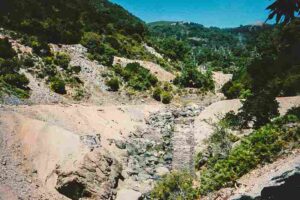
Largescale agricultural practices and projects, such as mass coffee production, can result in chemical buildup in soils. The extensive use of pesticides and fertilizers to boost agricultural yield can lead to soil contamination. In addition, the loss of forest shade due to deforestation prior to such projects, can contribute to higher water temperatures and chemical runoff, which can pollute rivers and aquatic ecosystems.
Consequences of Soil and Water Pollution in Rainforests, as a Result of Human Activities
Consequences of soil and water pollution for rainforests include; depletion of vital nutrients, reduction in forest yields, and chemical runoff.
Polluted forest soils may lose vital nutrients and minerals that are required for plant growth.
Pollution can also directly harm the growth of trees and reduce forest primary production rates.
Chemical runoff from polluted soils can contaminate both land and aquatic environments, posing risks to terrestrial and aquatic species.
7). Natural Resource Depletion (as one of the Human Impacts on Rainforests)
Rainforests, which are known for their rich biodiversity and vital role in maintaining global sustainability, are generally faced with significant challenges due to human activities, that lead to the depletion of natural resources and associated consequences.
Concepts, Sectors and Activities Linked to Natural Resource Depletion by Humans in Rainforests
Depletion of natural forest resources due to human activities, can be discussed and understood in terms of the contributions of sectors and activities like lumbering, agriculture, mining, oil and gas development.
The lumber industry is a major driver of natural resource depletion in tropical rainforests. This industry requires extensive areas of forest to be cleared in order to extract timber for various purposes, including construction, paper manufacturing and furniture production.
Logging operations often lead to significant scales of deforestation, which disrupt ecosystems and reduce the availability of valuable timber resources.
As earlier discussed, agriculture, with particular reference to large-scale farming practices, is another significant causative behind natural resource depletion in rainforests.
To make land available for such agricultural activities in remote areas, substantial areas of rainforest are often cleared. Crops such as palm oil and soybeans, as well as cattle ranching are common replacements for natural ecosystems in tropical regions [4]. The expansion of agricultural land into these ecosystems can lead to soil degradation and a loss of biodiversity.
Mining activities are generally resource-intensive and can cause extensive damage to rainforest ecosystems. Large expanses of forest are cleared to access ore deposits. This clearing may involve building roads and installing mechanized infrastructure, which further exacerbates deforestation and habitat destruction. Additionally, mining operations can cause the release harmful chemicals into the environment, which facilitate soil and water pollution.
The drilling of wells and extraction of oil and gas in rainforest regions can have far-reaching environmental repercussions. Clearing land for drilling, installing pipelines, and constructing infrastructure all contribute to deforestation. Also, oil spills and leaks can lead to water/soil pollution and harm aquatic ecosystems.
Deforestation, which is driven by these industries, is linked to the loss of diverse tropical forests. Large amounts of rainforest resources are depleted annually, with severe consequences for biodiversity. Fragmentation disrupts natural habitats and can isolate species populations, making it challenging for them to thrive in the absence of sufficient habitat and food resources.
The depletion of natural resources in rainforests is not limited to localized effects. On the contrary, it has global consequences. Rainforests are important for maintaining climate stability and air quality by acting as pollutant interceptors/carbon sinks and regulating weather patterns. Deforestation disrupts these critical functions, to affect not only rainforest regions but ecosystems worldwide.
One of the pressing challenges related to rainforest depletion by humans, is the unrelenting and progressive nature of human activities that drive rainforest destruction. Unlike natural causes, such as fires or storms, human activities like logging, mining, agriculture, and urbanization are ongoing and relentless, being driven by the increase in population size and resource demands.
8). Proliferation of Invasive Species
The proliferation of invasive species is another impact of human activities on rainforests, and has wide-ranging ecological and environmental consequences. Some insights into this issue are discussed here.
Key Issues Regarding Human-Introduced Invasive Species in Rainforests
Invasive species in rainforests as a result of human interference, can be discussed in terms of; biotic homogenization, ecosystem disturbance, economic and ecological impacts, agricultural losses, accelerated species turnover, understory suppression, and complexity changes.
Human activities within and around the vicinity of rainforests, often lead to the introduction and spread of invasive species. The resilient groups among these invaders often compete effectively native species, causing what is referred to as biotic homogenization [12].
This process results in a notable shift toward species assemblages that are dominated by a small number of invasive species, which thrive in human-altered environments. As a consequence, native species diversity decline, affecting the overall integrity and functionality of the ecosystem.
Human use of rainforests, including through activities like logging, agriculture, and urban development; can inadvertently increase the richness and abundance of invasive plants.
These activities disturb natural habitats and create opportunities for non-native species to establish themselves and thrive. Human disturbances further exacerbate the challenges posed by these invaders, by altering physicochemical conditions in rainforests.
Invasive species have adverse economic, ecological, and environmental implications toward rainforests. In the forestry and lumbering sector, invasive species can reduce timber yields and quality. They can also alter the natural dynamics of the ecosystem, disrupt nutrient recycling trends, and negatively affect native flora and fauna. These impacts can have widespread consequences for local communities and forest-dependent industries.
Losses in agroforestry can also be attributed to these Invasive species which, due to their competitive nature, can bring significant losses to native crops, agricultural communities, and ecosystems. Agricultural areas that are situated adjacent to rainforests are susceptible to invasion, which potentially leads to the displacement of useful crop species and the degradation of arable land.
Human activities in tropical rainforests, such as tree-felling, can lead to accelerated turnover of species [7]. Invasive species often thrive in such disturbed environments, where they further contribute to the displacement of native organisms. This increased species turnover can disrupt the stability and composition of the rainforest ecosystem.
Invasive species, including trees and smaller (vascular and non vascular) plants, can alter the structure of rainforests. They may suppress native understory vegetation by limiting the amount of light that reaches lower forest levels, as well as occupying space. This kind of competition can lead to changes in species composition and ecosystem dynamics, which affects the overall stability of the forest.
Rainforests are well known for their complex, stable, and dynamic composition. The introduction and proliferation of invasive species often disrupts the delicate balance of these ecosystems, thereby leading to altered species interactions, nutrient cycles, and ecological processes. This disruption can have ripple effects across the entire rainforest food web.
9). Ecological Land Use Conversion (as one of the Human Impacts on Rainforests)
Ecological land use conversion, which is primarily associated with deforestation and forest fragmentation, is an important impact of human activities on rainforests. This process involves altering rainforest landscapes for various anthropogenic purposes, often leading to profound ecological consequences.
Aspects of Rainforest Land Use Conversion
Land-use conversion of rainforests, can be discussed and understood in terms of deforestation, ecosystem fragmentation, replacement with agriculture, urbanization and infrastructure development.
As explained severally before, deforestation involves the clearing of large areas of rainforest for any of various alternative uses. These uses could include agriculture, commerce, infrastructure installation, and human habitation.
As a result of such conversion, rainforest habitats are destroyed, leading to a decline in forest species' abundance, vitality and diversity. The fragmentation of rainforests can be said to occur when large, continuous forested areas are divided into smaller, isolated patches. This process of fragmentation disrupts the ecological connectivity of the rainforest, and makes it more challenging for species to move, access essential resources, and maintain healthy populations.
One of the most common ways humans replace rainforests is by converting them into agricultural land. Economically viable crops such as soybeans, rice, palm oil, sugarcane, and coffee are often cultivated in former rainforest areas.
These conversions inevitably result in the loss of rainforest biodiversity, alteration of natural conditions, and soil degradation due to intensive farming practices (in the absence of natural soil conservation mechanisms).
Rapid urbanization and development of infrastructure such as roads and industrial complexes, are often behind the clearing of rainforests. Urban expansion into rainforest zones not only destroys habitat but also contributes to water and air pollution. Roads can fragment rainforest ecosystems, creating barriers to wildlife movement and causing roadkills of traversing animals.
Impacts of Climate Change on Rainforests
Impacts of climate change on rainforests include; increased average temperatures, drought, altered rainfall patterns, and shifts in species dynamics (spatial distribution, abundance).
Rising global temperatures can negatively affect rainforests by altering local climatic conditions. Higher temperatures can lead to increased evaporation, reducing humidity levels within the rainforest. This can in turn affect species that are adapted to high moisture levels, potentially leading to population-size and diversity declines.
Climate change can disrupt patterns of rainfall, leading to more extended periods of drought (or low relative humidity) in some rainforests and their environs. Drought stress combined with heat can weaken trees and make them more susceptible to diseases and pests. It can also affect the availability of water for both wildlife and nearby human communities.
Species can be forced to migrate as a result of climate change, to new areas in search of suitable climatic conditions. This movement can disrupt the balance of organic resources within rainforest ecosystems, and could be behind conflicts between native and invasive species, as well as between wildlife and human populations.
Sustainable Use of Rainforests
Sustainable use of rainforests can be achieved through selective logging, reforestation, biodiversity promotion, ecosystem protection, and reduced exploitation.
Sustainable management practices, such as selective logging of mature trees, and active reforestation, can help to preserve rainforest canopies and biodiversity, while allowing for conservative resource extraction.
Promoting the value and environmental/economic benefits of biodiversity associated with rainforests is another essential measure. Education initiatives can raise awareness about the importance of conserving rainforest ecosystems.
Identifying and protecting high-biodiversity areas within rainforests can also help to conserve important habitats and species.
Lastly, reducing the demand for products whose extraction leads to rainforest destruction, such as palm oil and timber can help curb deforestation.
Conclusion
Human impacts on rainforests are;
1. Habitat Fragmentation
2. Biodiversity Loss
3. Loss of Carbon Storage Capacity
4. Topographic and Geomorphic Change
5. Alteration of Regional Drainage Characteristics
6. Soil and Water Pollution
7. Natural Resource Depletion
8. Proliferation of Invasive Species
9. Ecological Land Use Conversion
References
1). Beaulieu, E.; Lucas, Y.; Viville, D.; Chabaux, F.; Ackerer, P.; Godderis, Y.; Pierret, M.-C. (2016). "Hydrological and vegetation response to climate change in a forested mountainous catchment." Modeling Earth Systems and Environment. 2. Available at: https://doi.org/10.1007/s40808-016-0244-1. (Accessed 21 September 2023).
2). Bonal, D.; Burban, B.; Stahl, C.; Wagner, F.; Hérault, B. (2015). "The response of tropical rainforests to drought-lessons from recent research and future prospects." Ann For Sci. 2016;73:27-44. Available at: https://doi.org/10.1007/s13595-015-0522-5. (Accessed 21 September 2023)..
3). Chiti, T.; Certini, G.; Grieco, E.; Valentini, R. (2010). "The role of soil in storing carbon in tropical rainforests: The case of Ankasa Park, Ghana." Plant and Soil. 331. 453-461. Available at: https://doi.org/10.1007/s11104-009-0265-x. (Accessed 21 September 2023).
4). Da, R.; Da Silveira Bueno, R.; Marchetti, L.; Cocozza, C.; Marchetti, M.; Salbitano, F. (2021). "Could cattle ranching and soybean cultivation be sustainable? A systematic review and a meta-analysis for the Amazon." iForest - Biogeosciences and Forestry. 14. 285-298. Available at: https://doi.org/10.3832/ifor3779-014. (Accessed 21 September 2023).
5). Duku, C.; Hein, L. (2021). "The impact of deforestation on rainfall in Africa : A data-driven assessment." Environmental Research Letters. 16. Available at: https://doi.org/10.1088/1748-9326/abfcfb. (Accessed 21 September 2023).
6). Gursoy, S. (2021). "Soil Compaction Due to Increased Machinery Intensity in Agricultural Production: Its Main Causes, Effects and Management." Available at: https://doi.org/10.5772/intechopen.98564. (Accessed 21 September 2023).
7). Jones, H.; Barreto, E.; Murillo-García, O.; Robinson, S. (2021). "Turnover-driven loss of forest-dependent species changes avian species richness, functional diversity, and community composition in Andean forest fragments." Global Ecology and Conservation. 32. Available at: https://doi.org/10.1016/j.gecco.2021.e01922. (Accessed 21 September 2023).
8). Kijowska-Oberc, J.; Staszak, A.; Ratajczak. (2020). "Adaptation of Forest Trees to Rapidly Changing Climate." Forests. 11. 123. Available at: https://doi.org/10.3390/f11020123. (Accessed 21 September 2023).
9). Nwachukwu, M.; Feng, H. (2012). "Environmental Hazards and Sustainable Development of Rock Quarries, Lower Benue Trough Nigeria." Available at:
10). Ogogo, A.; Bisong, F.; Tawo, A. (2013). "Habitat fragmentation and the population status of rodents in Abayum forest, Ikom, Cross River State, Nigeria." Natural Science. 05. 914-918. Available at: https://doi.org/10.4236/ns.2013.58110. (Accessed 21 September 2023).
11). Olagunju, T. (2015). "Impacts of Human-induced Deforestation, Forest Degradation and Fragmentation on Food Security." Available at: https://www.researchgate.net/publication/336232078_Impacts_of_Human-induced_Deforestation_Forest_Degradation_and_Fragmentation_on_Food_Security. (Accessed 21 September 2023).
12). Olden, J. (2006). "Biotic homogenization: A new research agenda for conservation biogeography." Journal of Biogeography. 33. 2027 - 2039. Available at: https://doi.org/10.1111/j.1365-2699.2006.01572.x. (Accessed 21 September 2023).
13). Woodwell, G. M.; Hobbie, J. E.; Houghton, R. A.; Melillo, J. M.; Moore, B.; Peterson, B. J.; Shaver, G. R. (1983). "Global deforestation: contribution to atmospheric carbon dioxide." Science. 1983 Dec 9;222(4628):1081-6. Available at: https://doi.org/10.1126/science.222.4628.1081. (Accessed 21 September 2023).
14). Xu, D.; Agee, E.; Wang, J.; Ivanov, V. (2019). "Estimation of Evapotranspiration of Amazon Rainforest Using the Maximum Entropy Production Method." Geophysical Research Letters. 46. Available at: https://doi.org/10.1029/2018GL080907. (Accessed 21 Accessed September 2023).
